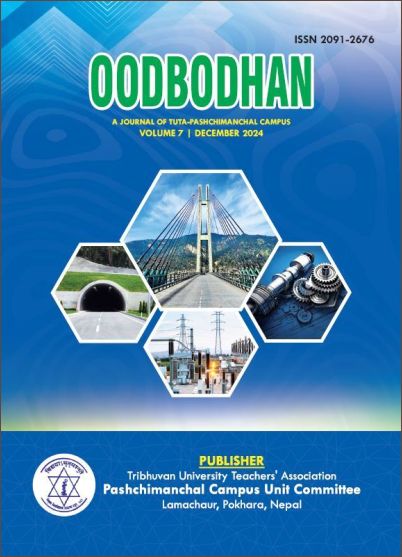Quantitative Comparison of Grain Structure in Heat Treated, Nital-Etched Mild Steel and TMT Bars
DOI:
https://doi.org/10.3126/oodbodhan.v7i1.75770Keywords:
Heat Treatment, Microstructure, Nital, Normalizing, QuenchingAbstract
Steels have microstructures such as ferrite, pearlite, and martensite, which directly influence properties like hardness, strength, and thermal conductivity. The impact of specific heat treatment procedures on mild steel and TMT bars, such as normalizing and quenching in mediums like water, ice, and oil, lead to changes in these microstructures, resulting in variations in mechanical and thermal properties. Nital reagent used for etching steel and other ferrous materials reveals their microstructures. Optical microscopy and image analysis technique is particularly effective in determining the amount or composition of different phases within a heat treated sample. Ice quenching is one that has the maximum (i.e., 85.05) percent of martensite in a mild steel rod, which signifies higher hardness making it suitable for applications where high strength is critical but, ductility is less important. Similarly, water quenched Thermex TMT bar shows a maximum (i.e., 11.73) percent of ferrite, which shows higher ductility as compared with mild steel rod and other TMT rods that makes it better for applications where deformation occurs, whereas normalizing in mild steel results in 73.37% of pearlite which suggests good balance between strength and ductility making it suitable for components that undergo cyclic loading. The conclusion shows the relevance of looking for the proper heat treatment techniques in order to obtain the best mechanical properties for various steels used in wide range of applications.
Downloads
Downloads
Published
How to Cite
Issue
Section
License
Copyright (c) 2024 The Author(s)

This work is licensed under a Creative Commons Attribution-NonCommercial-NoDerivatives 4.0 International License.
This license enables reusers to copy and distribute the material in any medium or format in unadapted form only, for noncommercial purposes only, and only so long as attribution is given to the creator.




